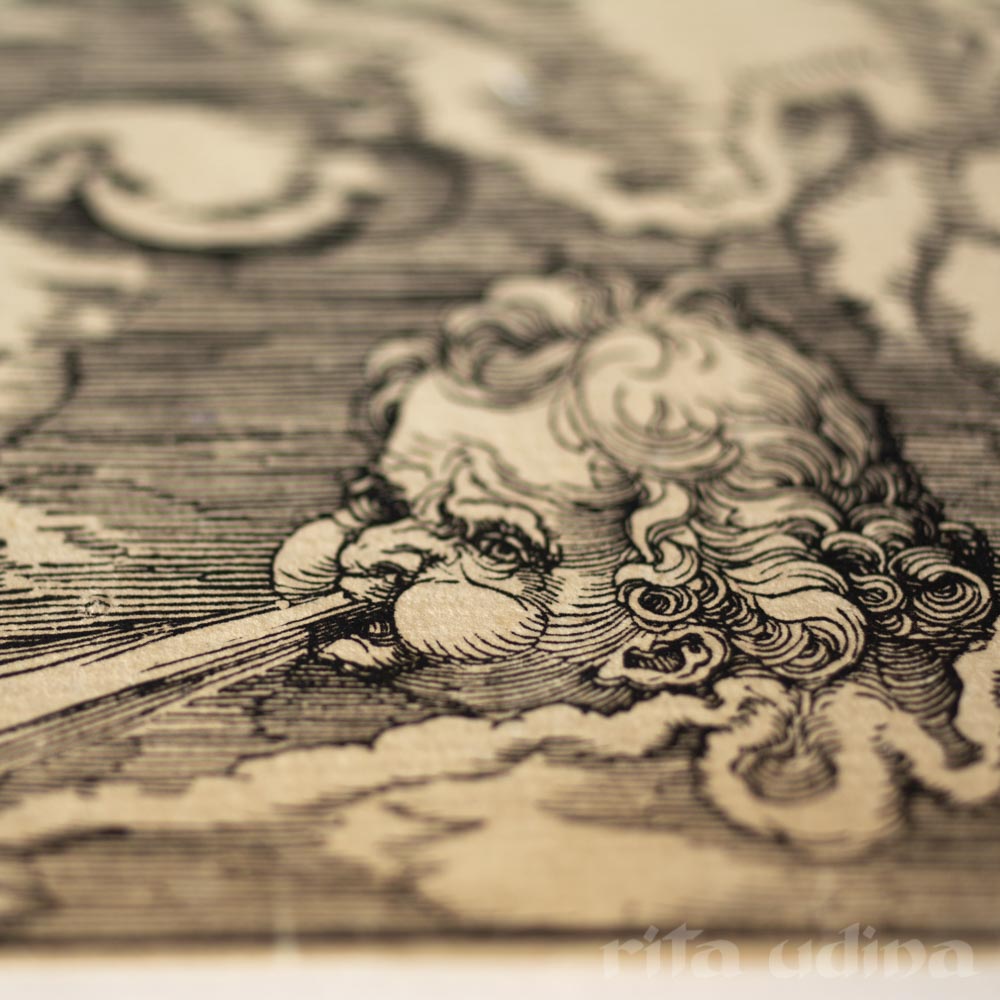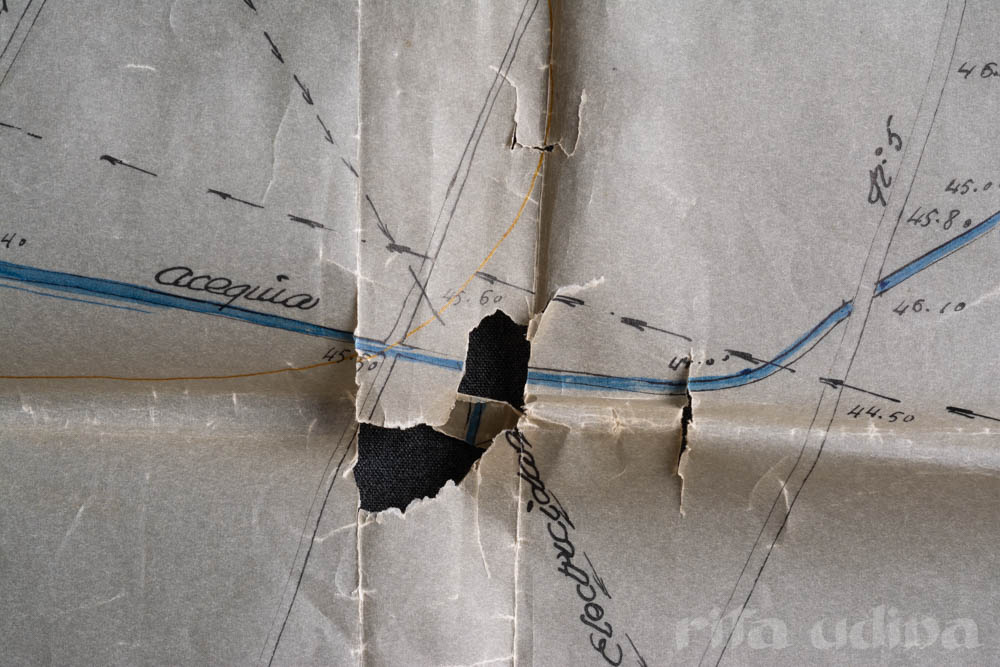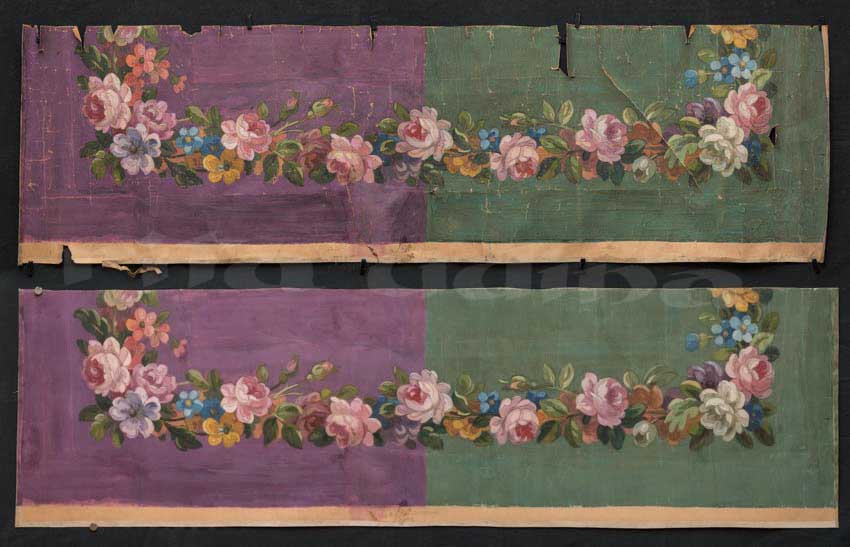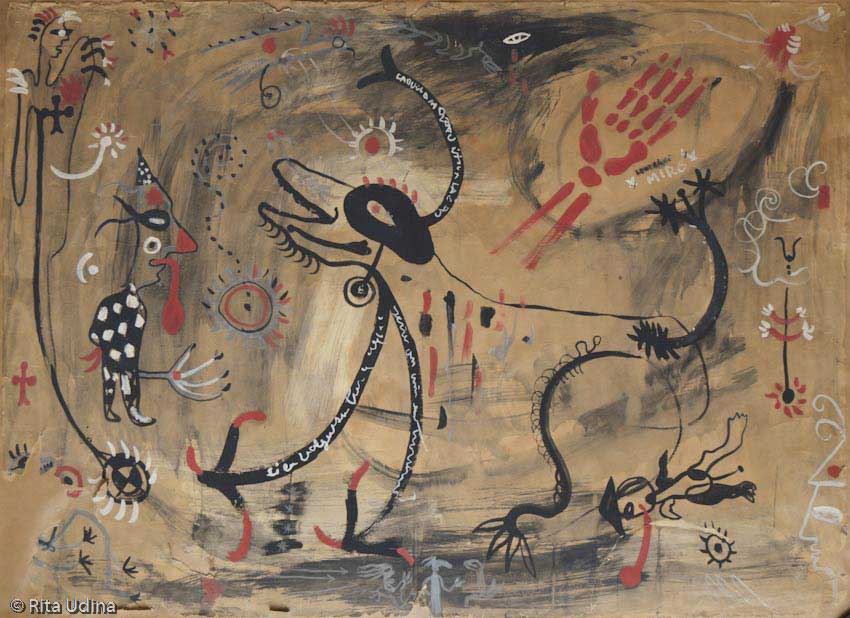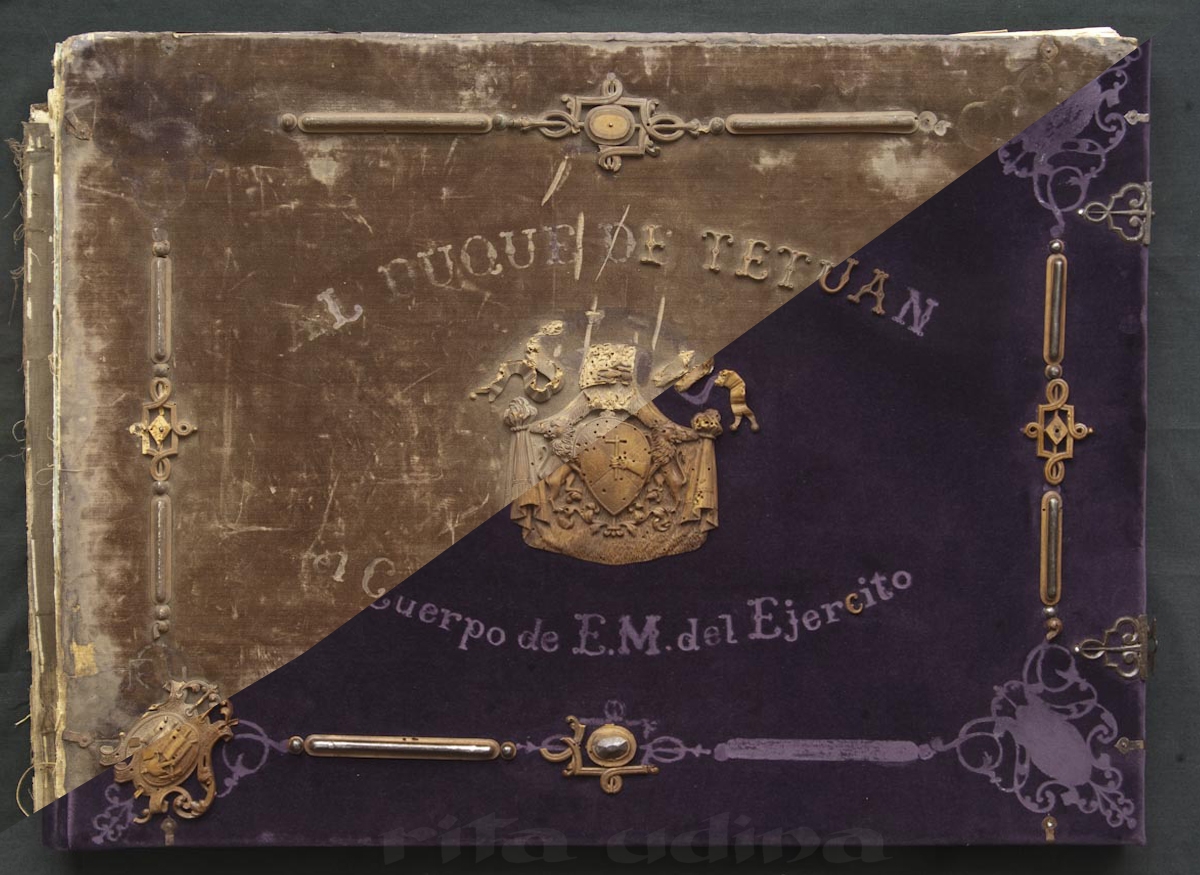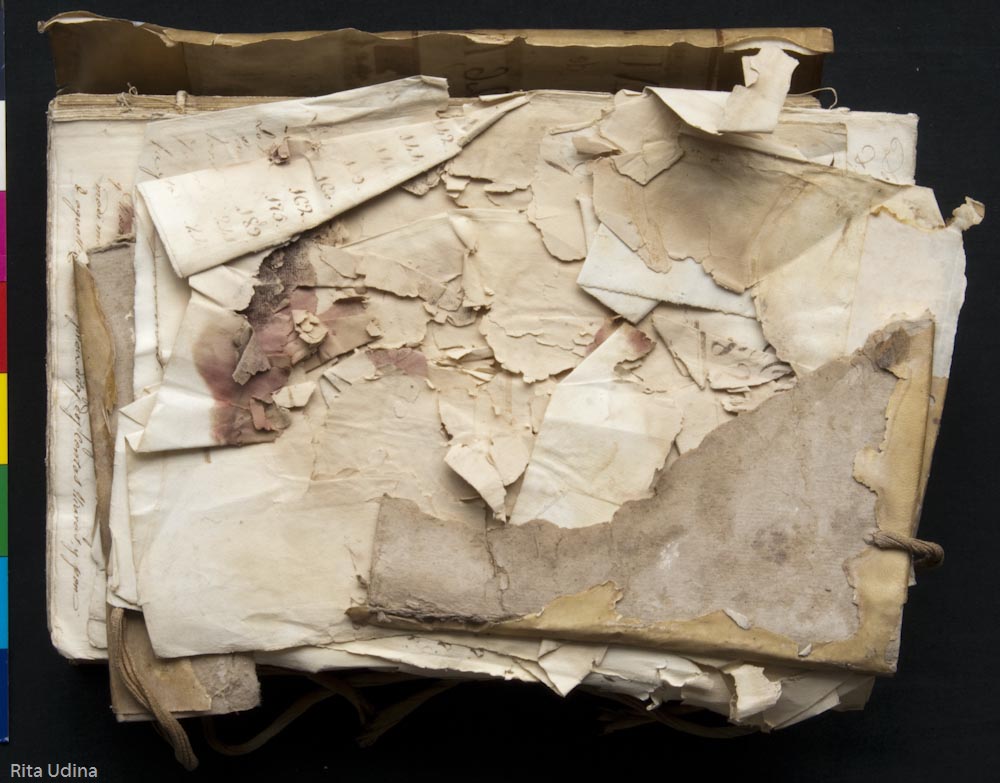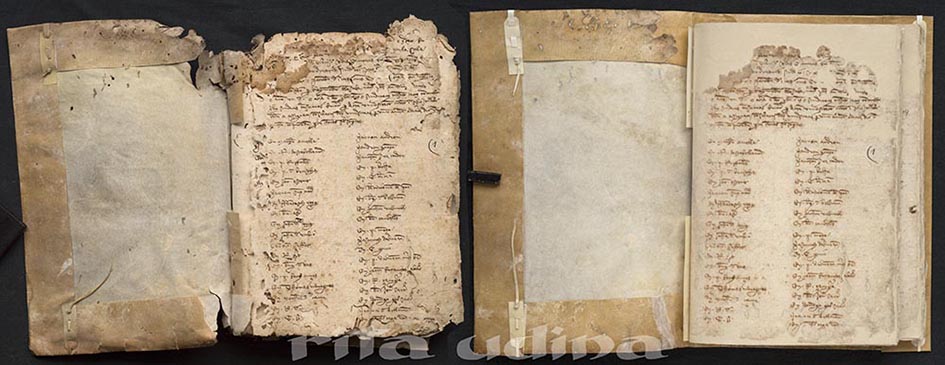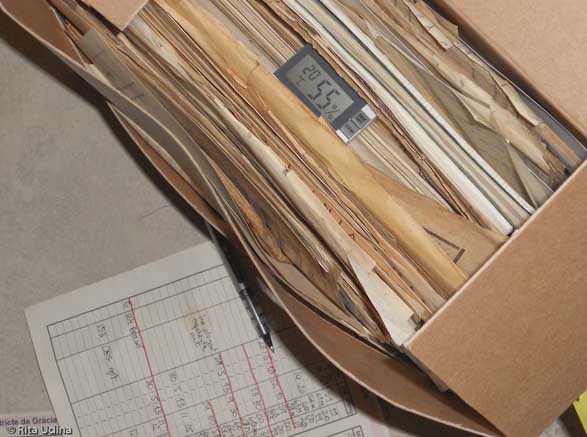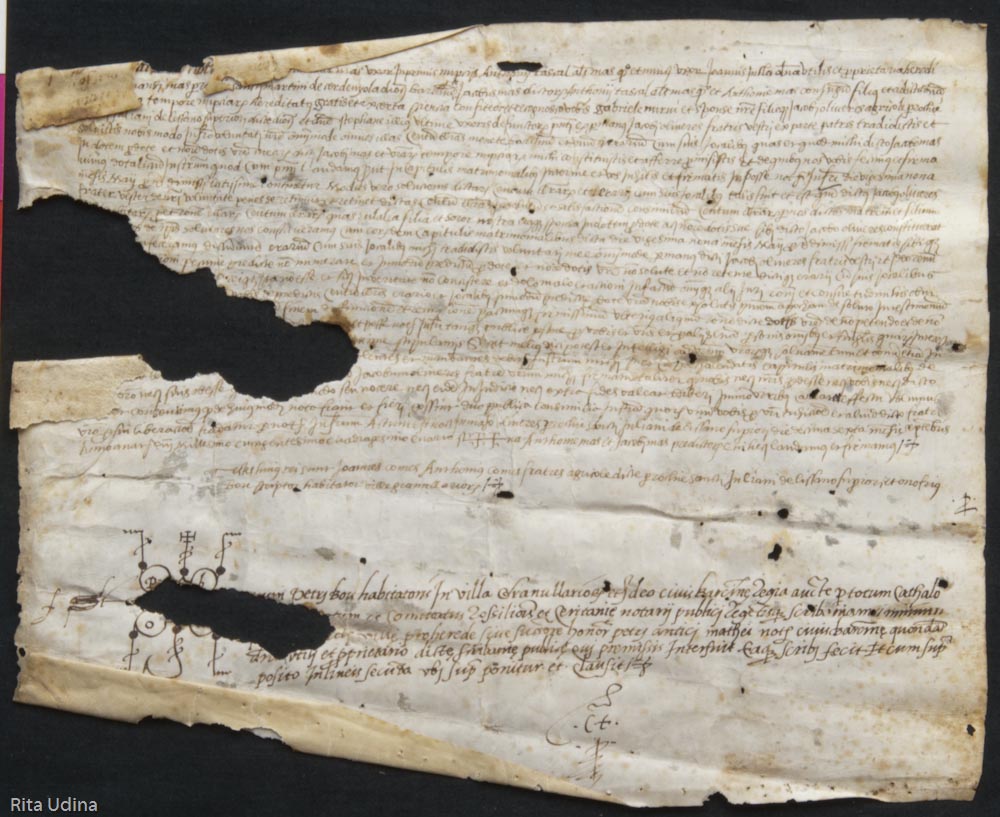Conservation of paper artwork, documents and graphic materials
Some projects of interest (see published projects on conservation of paper artworks and documents conservation):
- Conservation of prints of any kind. Original copies by Goya, Picasso, Dalí, Dürer, Piranesi, Lichtenstein, Brügel, Mercator, Ortelius, Blaeu, Miró, Chéret, Chillida, Tàpies, Hidai, Saura, Gudiol, Guinovart, Clavé or G. Demarteau.
- Conservation of drawings and manuscripts by Dalí, Ingres, A. Canova, Gaudí, L. Cambiaso, Ramon Casas, Marià Fortuny, Tapiró, Nonell, Opisso, Adami, Ponç, Steinberg, Mingote, Cobean, Quino, Perico Pastor, Cesc, Mariscal, Domènech i Montaner, Galofre, Rogent, Mestres, Emili Armengol, Lola Anglada, P. Bayès, Estrany, D. Vilàs, among other.
- Conservation of non artistic documents, handwritten or either printed: parchment manuscripts, architectural drawings, technical designs, plans and maps, stationery or any other artistic or administrative documents.
Ellegible materials/supports
Typical writting materials are diverse, most commonly dealing with paper (woven paper, laid paper, tracing paper , rice paper or any other kind), but it can also be related to fabric/cloth, board or parchment. which is the material used to write o before paper was invented.
Techniques (writing, painting, printing)
The technique is the method used to write or paint on paper or the chosen material. Paper conservation generally faces treating these techniques:
Manuscripts , ink, ciclostils, prints, etchings, lithografphs, woodcuts, watercolours, gouache, charcoal, pastel, red chalk, pencil, graphite, wax, oil,mixed techniques, ball point pen, felt tip pen an others.
Artefacts’ tipology
Each treatment is adapted to the special needs of the artefact. Is it varnished? Is it backed on linen? Is it part of a metal device? We’ll find the best solution for your request. Either maps, technical designs, drawings, posters, a box or a fan… we’ll find the best solution to each challenge.
Standard conservation treatments
Conservation entails treating directly the artwork, while preservation aims to ensure that the environment is optimal to guarantee physical permanence. The latter avoids directly treating the artefact by means of disinfecting it or making a custom-made box, for instance. Standard conservation treatments are:
- Mould treatment (stopping biological decay, if any).
- Cleaning and stain removal (tape removal, tide-line removal, surface cleaning etcetera).
- Wet cleaning, deacidification, other chemical treatments.
- Tear mending, lining, backing and other reinforcement treatments of damaged supports.
- Flattening (wrinkles, tensions, folds).
- Bleaching by reduction and light bleaching.
- Infilling and retouch / in-painting (criteria depending on each case).
- Mounting and housing. Special wrappers, folders or boxes.
Conservation of paper artwork, documents and graphic materials
Some projects of interest (see published projects on conservation of paper artworks and documents conservation):
- Conservation of prints of any kind. Original copies by Goya, Picasso, Dalí, Dürer, Piranesi, Lichtenstein, Brügel, Mercator, Ortelius, Blaeu, Miró, Chéret, Chillida, Tàpies, Hidai, Saura, Gudiol, Guinovart, Clavé or G. Demarteau.
- Conservation of drawings and manuscripts by Dalí, Ingres, A. Canova, Gaudí, L. Cambiaso, Ramon Casas, Marià Fortuny, Tapiró, Nonell, Opisso, Adami, Ponç, Steinberg, Mingote, Cobean, Quino, Perico Pastor, Cesc, Mariscal, Domènech i Montaner, Galofre, Rogent, Mestres, Emili Armengol, Lola Anglada, P. Bayès, Estrany, D. Vilàs, among other.
- Conservation of non artistic documents, handwritten or either printed: parchment manuscripts, architectural drawings, technical designs, plans and maps, stationery or any other artistic or administrative documents.
Ellegible materials/supports
Typical writting materials are diverse, most commonly dealing with paper (woven paper, laid paper, tracing paper , rice paper or any other kind), but it can also be related to fabric/cloth, board or parchment. which is the material used to write o before paper was invented.
Techniques (writing, painting, printing)
The technique is the method used to write or paint on paper or the chosen material. Paper conservation generally faces treating these techniques:
Manuscripts , ink, ciclostils, prints, etchings, lithografphs, woodcuts, watercolours, gouache, charcoal, pastel, red chalk, pencil, graphite, wax, oil,mixed techniques, ball point pen, felt tip pen an others.
Artefacts’ tipology
Each treatment is adapted to the special needs of the artefact. Is it varnished? Is it backed on linen? Is it part of a metal device? We’ll find the best solution for your request. Either maps, technical designs, drawings, posters, a box or a fan… we’ll find the best solution to each challenge.
Standard conservation treatments
Conservation entails treating directly the artwork, while preservation aims to ensure that the environment is optimal to guarantee physical permanence. The latter avoids directly treating the artefact by means of disinfecting it or making a custom-made box, for instance. Standard conservation treatments are:
- Mould treatment (stopping biological decay, if any).
- Cleaning and stain removal (tape removal, tide-line removal, surface cleaning etcetera).
- Wet cleaning, deacidification, other chemical treatments.
- Tear mending, lining, backing and other reinforcement treatments of damaged supports.
- Flattening (wrinkles, tensions, folds).
- Bleaching by reduction and light bleaching.
- Infilling and retouch / in-painting (criteria depending on each case).
- Mounting and housing. Special wrappers, folders or boxes.
Conservation of paper artwork, documents and graphic materials
Some projects of interest (see published projects on conservation of paper artworks and documents conservation):
- Conservation of prints of any kind. Original copies by Goya, Picasso, Dalí, Dürer, Piranesi, Lichtenstein, Brügel, Mercator, Ortelius, Blaeu, Miró, Chéret, Chillida, Tàpies, Hidai, Saura, Gudiol, Guinovart, Clavé or G. Demarteau.
- Conservation of drawings and manuscripts by Dalí, Ingres, A. Canova, Gaudí, L. Cambiaso, Ramon Casas, Marià Fortuny, Tapiró, Nonell, Opisso, Adami, Ponç, Steinberg, Mingote, Cobean, Quino, Perico Pastor, Cesc, Mariscal, Domènech i Montaner, Galofre, Rogent, Mestres, Emili Armengol, Lola Anglada, P. Bayès, Estrany, D. Vilàs, among other.
- Conservation of non artistic documents, handwritten or either printed: parchment manuscripts, architectural drawings, technical designs, plans and maps, stationery or any other artistic or administrative documents.
Ellegible materials/supports
Typical writting materials are diverse, most commonly dealing with paper (woven paper, laid paper, tracing paper , rice paper or any other kind), but it can also be related to fabric/cloth, board or parchment. which is the material used to write o before paper was invented.
Techniques (writing, painting, printing)
The technique is the method used to write or paint on paper or the chosen material. Paper conservation generally faces treating these techniques:
Manuscripts , ink, ciclostils, prints, etchings, lithografphs, woodcuts, watercolours, gouache, charcoal, pastel, red chalk, pencil, graphite, wax, oil,mixed techniques, ball point pen, felt tip pen an others.
Artefacts’ tipology
Each treatment is adapted to the special needs of the artefact. Is it varnished? Is it backed on linen? Is it part of a metal device? We’ll find the best solution for your request. Either maps, technical designs, drawings, posters, a box or a fan… we’ll find the best solution to each challenge.
Standard conservation treatments
Conservation entails treating directly the artwork, while preservation aims to ensure that the environment is optimal to guarantee physical permanence. The latter avoids directly treating the artefact by means of disinfecting it or making a custom-made box, for instance. Standard conservation treatments are:
- Mould treatment (stopping biological decay, if any).
- Cleaning and stain removal (tape removal, tide-line removal, surface cleaning etcetera).
- Wet cleaning, deacidification, other chemical treatments.
- Tear mending, lining, backing and other reinforcement treatments of damaged supports.
- Flattening (wrinkles, tensions, folds).
- Bleaching by reduction and light bleaching.
- Infilling and retouch / in-painting (criteria depending on each case).
- Mounting and housing. Special wrappers, folders or boxes.








